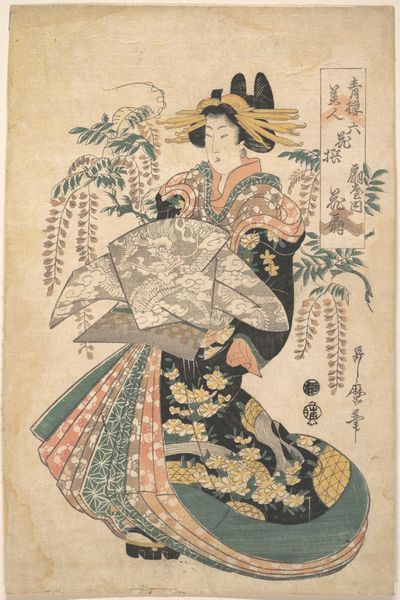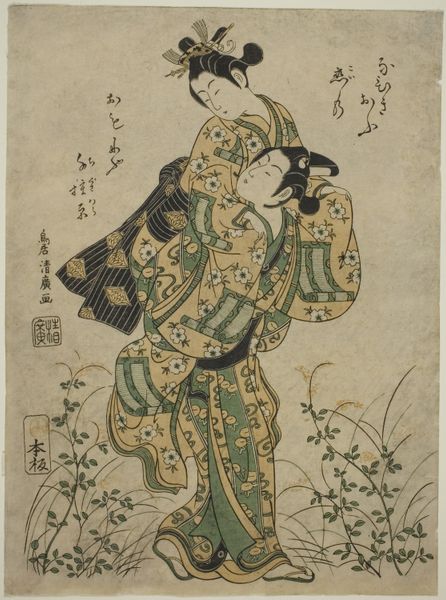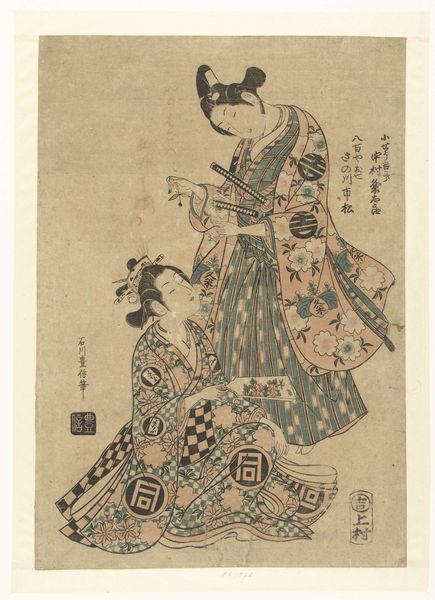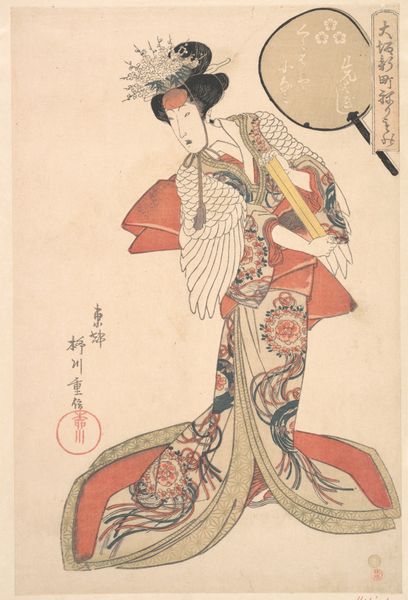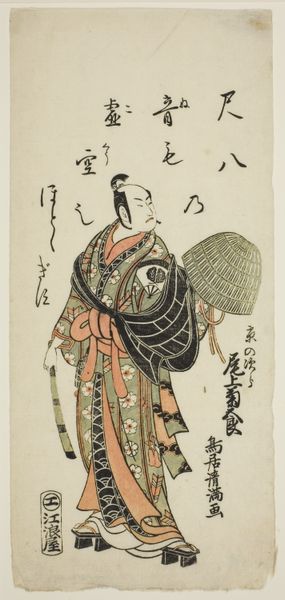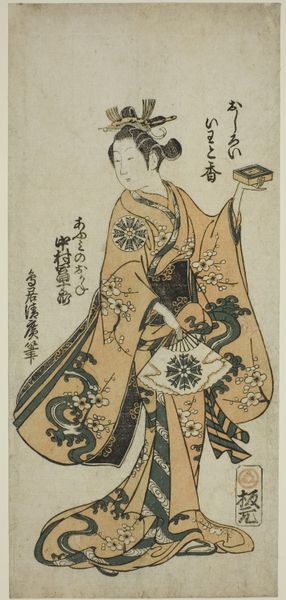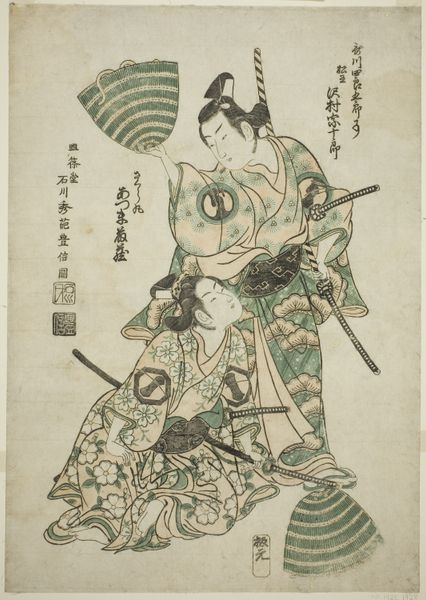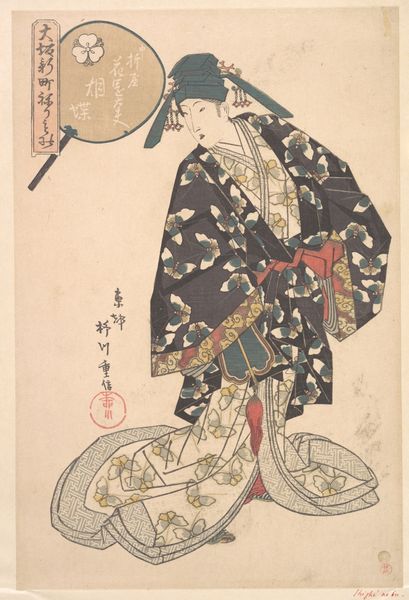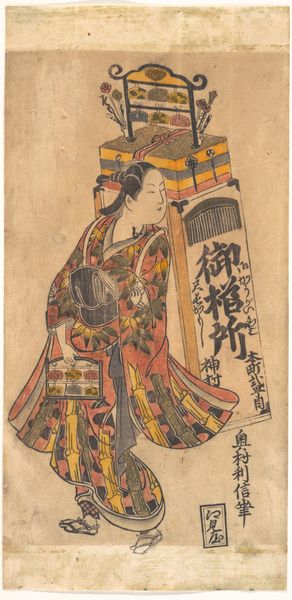
Actor Iwai Matsunosuke I as the Prostitute Kewaizaka no Shōshō c. 1819
0:00
0:00
print, ink
#
portrait
#
ink painting
# print
#
ukiyo-e
#
japan
#
ink
#
genre-painting
Dimensions: 14 1/16 × 9 5/8 in. (35.7 × 24.4 cm) (image, sheet, vertical ōban)
Copyright: Public Domain
Curator: This arresting print is by Utagawa Kunisada, dating back to about 1819. It depicts the actor Iwai Matsunosuke I in the role of the courtesan Kewaizaka no Shōshō, rendered using ink on paper. Editor: My first thought is that the detail is phenomenal. Look at the intricacy of the floral patterns on the outer kimono. But there's a somber mood too, an introspective quality in her downcast gaze. Curator: Absolutely, the layered garments signify both status and disguise within the Kabuki context. Actors cross-dressing in Ukiyo-e prints like this often subverted social norms, challenging established power structures through performance. We need to acknowledge the inherent tensions and performance of gender and class here. Editor: Thinking about the production, one must also acknowledge that Ukiyo-e, which literally translates as ‘pictures of the floating world,’ were a commodity for wide distribution and not exactly an elitist art form. That’s fascinating in itself—the democratisation of such arresting visuals in early 19th century Japan. How were the female subjects of the day, prostitutes in this example, complicit in this public role, and in shaping popular perception? Curator: It's critical to understand how these prints contributed to shaping—and arguably exploiting—certain idealized representations of women. While ostensibly celebrating female beauty and artistic skill, they could also reinforce restrictive stereotypes and objectification. Note also the male actor playing the prostitute here. How does this layered performance challenge fixed notions of identity and gender? Editor: I agree. These works really exemplify art’s complex role in both mirroring and constructing social realities. Seeing this work alongside contemporary gender theories allows us to deconstruct the very notions of representation. And the cultural phenomenon of depicting actors as the embodiment of different genders is worth considering. The cross-dressing invites exploration into what gender, beauty, and performance all mean within the realm of Japanese culture. Curator: Examining this ukiyo-e reveals the fluid interplay of artistic representation, social critique, and theatrical performance. It invites a broader consideration of the cultural and political implications embedded in representations of gender. Editor: I’ve been challenged to think about the social commentary of art on a whole new level today. Thank you.
Comments
minneapolisinstituteofart almost 2 years ago
⋮
Presumably part of a triptych. Related to the play "Soga moyō iwase no kumi obi" 曽我綉妹背組帯, performed at the Nakamura Theater in the first month of 1819.
Join the conversation
Join millions of artists and users on Artera today and experience the ultimate creative platform.
